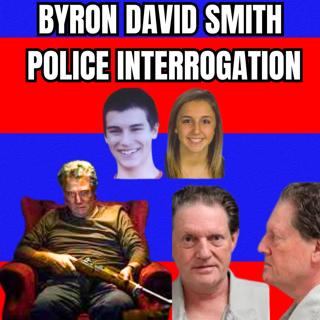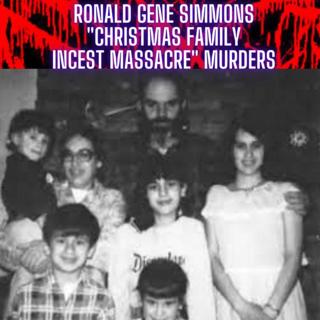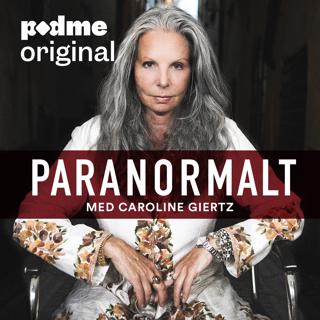![The Murder Of Paula Allen [True Crime Documentary]](https://cdn.podme.com/podcast-images/E640380D4125695ECFE58F82000CCD6A_small.jpg)
The Murder Of Paula Allen [True Crime Documentary]
The Murder Of Paula Allen [True Crime Documentary] Firefighters were called to the double-wide trailer on March 22, 2011, and discovered Paula Allen trapped inside. She died of smoke inhalation and thermal burns, according to autopsy records. The fire was ignited by David Allen, 49, according to the inquiry. The Coryell County Sheriff's Department claimed it was not an accident. According to Allen's indictment, the grand jury charged him with capitol murder, alleging that he set fire to his home while his wife was inside sleeping. In 2012, a Grand Jury indicted David Allen. Following the indictment, he pleaded guilty to capital murder and is now serving a 30-year sentence in a state prison in Huntsville. In this episode, we delve into the chilling mystery surrounding the murder of Paula Allen—a case that has left a community in shock and investigators with more questions than answers. We explore the timeline of events, scrutinize the available evidence, and examine the leads that have emerged over time. Through expert interviews and detailed analysis, we attempt to reconstruct the circumstances of Paula Allen's tragic death, highlighting the challenges faced in bringing justice to a case that remains shrouded in uncertainty. Keywords: Paula Allen, true crime, murder mystery, unsolved case, crime investigation, victim, forensic analysis, cold case, police investigation, evidence, suspects, justice, community impact
21 Feb 43min

Oklahoma Teacher Allegedly Shows Up Drunk on First Day of Elementary School
Oklahoma Teacher Allegedly Shows Up Drunk on First Day of Elementary School Bodycam Audio shows a third-grade teacher being questioned by Oklahoma police after allegedly showing up heavily intoxicated on the first day of school on August 17. The video shows Kimberly Coates awkwardly denying being drunk before blowing a 0.24 BAC during a breathalyzer test. Coates would later admit to drinking late the night before and the next morning on the way to work, but denied having any alcohol on school property. The school resource officer pressed her, referencing her cup of “juice.” “Want to try again? That there is wine,” the officer said. Perkins police took Coates into custody and later released her. Oklahoma Teacher Allegedly Shows Up Drunk on First Day of Elementary School Bodycam Audio True Crime Podcast 2025 REAL Police Interrogations Serial Killer Documentaries 911 Calls Investigation
21 Feb 35min

The Brutal Deaths Of JJ Vallow And Tylee Ryan - True Crime Documentary
The Brutal Deaths Of JJ Vallow And Tylee Ryan - True Crime Documentary Lori Vallow Daybell's two children, Joshua "JJ" Vallow and Tylee Ryan, were killed. Chad Daybell and Lori Vallow Daybell have been charged with first-degree murder. Vallow's grandparents reported the children missing when they were 7 and 17 years old, respectively, in 2019. The couple was ordered by a judge to produce the children, but they refused, accusing them of lying about their location. Lori Vallow Daybell was detained in Hawaii while on her honeymoon with her husband. In June of 2020, the children's bodies were discovered buried in their stepfather's Idaho property. Chad Daybell married Lori Vallow Daybell two weeks after Chad's ex-wife, Tammy, death, investigators were suspicious. Tammy Daybell's obituary stated that she died of natural causes. However, Tammy Daybell's body was exhumed for further examination in December 2019. On what would have been Joshua Vallow's 9th birthday, the new murder charges were announced. According to CBS 2 in Idaho, the couple was presented with warrants in jail. the deaths of jj vallow and tylee ryan,lori vallow daybell,chad daybell,murder,true crime,documentary,crime mystery,jj vallow and tylee ryan True Crime Podcast 2025 REAL Police Interrogations Serial Killer Documentaries 911 Calls Investigation
21 Feb 1h 19min

Ukrainian Girls Busted for Battery on Police and Resisting - Key West, Florida
Ukrainian Girls Busted for Battery on Police and Resisting - Key West, Florida In May 2023, an incident in Key West, Florida, involved two women reportedly of Ukrainian descent who were arrested for battery on a law enforcement officer and resisting arrest. Ukrainian women, battery on law enforcement officer, resisting arrest, Key West, Florida, May 2023, arrest, law enforcement, viral video, public disturbance, criminal charges.
21 Feb 31min

Uncovering the Dark Truth: Gavin's Family Massacre
Uncovering the Dark Truth: Gavin's Family Massacre In December 2020, 16-year-old Gavin Smith from Elkview, West Virginia, fatally shot his mother, Risa Mae Saunders, 39; his stepfather, Daniel Dale Long, 37; and his two younger brothers, Gage Ripley, 12, and Jameson Long, 3. The victims were discovered days later by family members. In December 2022, a Kanawha County jury convicted Smith on three counts of first-degree murder and one count of second-degree murder. The following month, Judge Kenneth Ballard sentenced him to life in prison with mercy for the first-degree murder charges, making him eligible for parole after 15 years, as mandated by West Virginia law for juveniles. He also received a consecutive 40-year sentence for the second-degree murder conviction and an additional 10 years for a firearms charge. During the trial, evidence revealed that Smith's parents had forbidden him from seeing his girlfriend, Rebecca Walker. On the night of the murders, Smith was on a video call with Walker before, during, and after the killings. Walker later pleaded guilty to four counts of accessory after the fact to first-degree murder and was sentenced to 10 years in prison. Judge Ballard described the murders as "an act of pure evil," noting that Smith showed no remorse for his actions. Gavin Smith, family massacre, Elkview, West Virginia, Risa Mae Saunders, Daniel Dale Long, Gage Ripley, Jameson Long, teenage killer, first-degree murder, second-degree murder, life sentence with mercy, parole eligibility, Rebecca Walker, accessory after the fact, juvenile sentencing, Kanawha County, Judge Kenneth Ballard, video call evidence, firearms charge, crime of passion.
21 Feb 1h 27min

UFO Reporting Center Telephone Recordings from UFO Encounter Witnesses ACTUAL AUDIO #1
UFO Reporting Center Telephone Recordings from UFO Encounter Witnesses ACTUAL AUDIO #1 National UFO Reporting Center - Information and Policies The National UFO Reporting Center was founded in 1974 by noted UFO investigator Robert J. Gribble. The Center’s primary function over the past four decades has been to receive, record, and to the greatest degree possible, corroborate and document reports from individuals who have been witness to unusual, possibly UFO-related events. Throughout its history, the Center has processed over 150,000 reports, and has distributed its information to thousands of individuals. The principal means used by the Center to receive sighting reports is this website, which has operated continuously since 1994. Prior to that period, the telephone hotline and the U.S. mail were the primary means of taking reports. The Center’s independence from all other UFO related organizations, combined with its long standing policy of guaranteed anonymity to callers, has served to make it perhaps the most popular and widely accepted national UFO reporting facility anywhere. The website and hotline are well known by law enforcement agencies, FAA ARTCC’s and flight service stations, National Weather Services offices, military facilities, NASA, and many 911 emergency dispatch centers all across the United States and in many parts of Canada. Those entities routinely direct the calls they receive regarding possible UFO sightings to the Center. UFO Reporting Center Telephone Recordings from UFO Encounter Witnesses #1 One of the Center’s policies, which distinguishes its operations from most other UFO organizations, is that it makes available to the public all of its data in summary form. Detailed information is made available to experienced UFO investigators. UFO, UFO Sightings, UFO Encounters, NUFORC, National UFO Reporting Center, Telephone Recordings, Witness Testimony, Audio Recordings, Unidentified Flying Object, Extraterrestrial, Close Encounters, Strange Lights, Unusual Objects, Aerial Phenomena, Unexplained Phenomena, Paranormal, Mystery, Investigation, Skepticism, Belief, Firsthand Accounts, Eyewitness Accounts, Historical Record, Subjective Experience.
12 Feb 19min

Serial Killer Altemio Sanchez AKA "The Bike Path Rapist." - True Crime Documentary
Serial Killer Altemio Sanchez AKA "The Bike Path Rapist." - True Crime Documentary Serial Killer Altemio Sanchez AKA "The Bike Path Rapist"Altemio Sanchez, known as The Bike Path Rapist, terrorized western New York for over two decades. Operating primarily in the Buffalo area, he was responsible for multiple sexual assaults and at least three confirmed murders between the 1980s and early 2000s. For years, Sanchez eluded authorities despite a growing body of DNA evidence. It wasn’t until 2007 that forensic genealogy and investigative breakthroughs led to his arrest. He eventually pleaded guilty to the murders of Linda Yalem, Majane Mazur, and Joan Diver, as well as numerous rapes. His double life shocked those who knew him—Sanchez was a family man, married with children, and worked as a factory employee. His ability to blend into society while committing horrific crimes made his case particularly chilling. Altemio Sanchez, also known as the "Bike Path Rapist," terrorized the Buffalo, New York area for over three decades. Here's a breakdown of his horrific crimes: The Victims: Sanchez is known to have raped at least 9 to 15 girls and women and murdered three: Linda Yalem: A University at Buffalo student, raped and murdered in 1990. Majane Mazur: A sex worker, raped and murdered in 1992. Joan Diver: A nurse and mother of four, murdered in 2006. The Crimes: Sanchez's crimes spanned from 1975 to 2006. He typically attacked his victims near secluded bike paths, hence his nickname. His methods often involved strangulation, and he sometimes raped his victims. The Investigation: The case remained unsolved for many years, despite the efforts of investigators. DNA evidence eventually played a crucial role in linking Sanchez to the crimes. The Perpetrator: Altemio Sanchez was a seemingly ordinary man, a machinist and factory worker, married with children. He was even involved in his community, coaching his sons' basketball and baseball teams. This facade hid a dark and violent side. The Aftermath: Sanchez was arrested in 2007 and confessed to the murders. He pleaded guilty and was sentenced to 75 years to life in prison. His arrest led to the release of Anthony Capozzi, an innocent man who had spent 22 years in prison for a rape Sanchez had committed. This case is particularly disturbing because of the length of time Sanchez was able to commit his crimes and the contrast between his outward appearance and his brutal actions. It highlights the importance of DNA evidence in solving cold cases and the devastating impact of violence on victims and their families. Altemio Sanchez, Bike Path Rapist, Serial Killer, Buffalo, New York, Linda Yalem, Majane Mazur, Joan Diver, Rape, Murder, Strangling, DNA, Cold Case, Anthony Capozzi, Wrongful Conviction, 1975, 1990, 1992, 2006, Crime, Homicide, Sexual Assault, Justice, Forensic Science, Confession, 75 Years to Life
12 Feb 43min

Teen Murderer Byron David Smith Full Length Police Interrogation
Teen Murderer Byron David Smith Full Length Police Interrogation Byron David Smith's case is a disturbing example of a seemingly clear-cut case of self-defense that became much more complex upon closer examination. Here's a more detailed look: The Incident: On Thanksgiving Day 2012, Haile Kifer and Nicholas Brady, two teenagers, entered Smith's home in Little Falls, Minnesota. Smith, who was 64 years old at the time, shot and killed both of them. The Claim of Self-Defense: Smith immediately claimed he acted in self-defense. He stated he feared for his life and that the teens were intruders. This initial narrative aligned with many people's understanding of "castle doctrine" or "stand your ground" laws, which generally allow homeowners to use deadly force against intruders. The Evidence Against Him: The key piece of evidence that challenged Smith's self-defense claim was the audio recordings he made before, during, and after the shootings. These recordings revealed a very different picture than the one Smith presented. Premeditation: The recordings documented Smith's increasing anxiety and preparations in the days leading up to the break-in. He talked about his fears and his plans. Crucially, he set up a chair in his basement, where he waited, armed, for the teens to enter. This suggested premeditation, not a spontaneous reaction to a threat. Actions During the Break-In: The recordings captured the sounds of the teens entering the house. Smith did not immediately confront them. Instead, he waited and then shot them individually. This contradicted the idea of someone reacting out of immediate fear for their life. Callous Remarks After the Shootings: Perhaps the most damaging aspect of the recordings were Smith's comments after he killed the teenagers. He made callous and insensitive remarks about the victims, showing a lack of remorse and suggesting a degree of satisfaction. These statements painted a picture of someone who was not simply defending himself but had a more malicious intent. The Trial and Conviction: The prosecution argued that Smith's actions and words, as captured on the recordings, demonstrated that he had planned the killings and acted with premeditation. They argued that he did not fear for his life and that his use of deadly force was not justified. The jury ultimately agreed, finding him guilty of second-degree murder. The Aftermath and Debate: The case sparked a national debate about self-defense laws and the limits of justifiable force. It raised complex questions about fear, intent, and the use of deadly force in one's own home. The recordings were central to the case, providing a chilling and intimate glimpse into Smith's mindset and actions. They served as a stark reminder that even in seemingly straightforward cases, the details can be far more nuanced than they initially appear. the significance of the recordings in the Byron David Smith case. They were indeed a crucial piece of evidence that painted a chilling picture of his actions and mindset. Here's a breakdown of the key aspects related to the recordings and the interrogation:The Recordings: Premeditation: The recordings captured Smith's increasing anxiety and preparations in the days leading up to the break-in. He discussed his fears and plans, even setting up a chair in his basement where he waited, armed, for the teens to enter. This strongly suggested premeditation, not a spontaneous reaction to a threat. Actions During the Break-In: The recordings documented the sounds of the teens entering the house. Smith did not immediately confront them. Instead, he waited and then shot them individually. This contradicted the idea of someone acting out of immediate fear for their life. Callous Remarks After the Shootings: Perhaps the most damning aspect of the recordings were Smith's comments after he killed the teenagers. He made callous and insensitive remarks about the victims, showing a lack of remorse and suggesting a degree of satisfaction. These statements painted a picture of someone who was not simply defending himself but had a more malicious intent. The Interrogation: Smith's Initial Account: During his initial interrogation, Smith likely presented a version of events that aligned with his claim of self-defense. He probably emphasized his fear and the perceived threat posed by the intruders. Confronting the Evidence: It's likely that investigators confronted Smith with the audio recordings during the interrogation. This would have forced him to address the inconsistencies between his account and the recorded evidence. Shifting Narrative: It's possible that Smith's narrative may have shifted during the interrogation as he was confronted with the recordings. He might have tried to explain his comments or justify his actions, but the recordings provided powerful evidence against him. Keywords: Byron David Smith, Little Falls, Minnesota, Home Invasion, Self-Defense, Audio Recordings, Premeditation, Second-Degree Murder, Haile Kifer, Nicholas Brady, Shooting, Trial, Interrogation, Evidence, Gun Control, Castle Doctrine, Stand Your Ground, 2012, Thanksgiving, Fear, Intent, Deadly Force.
12 Feb 1h 31min





















